These beautiful images and descriptions of nebula, universes and galaxies are courtesy of NASA, STScI and Joseph D. Schulman. It is humbling to see our sun in our galaxy.
Click on the link below to purchase or just enjoy and share these images.
Fabulous Space Gifts Link
"The Carina Nebula, also known as the Great Nebula in Carina, the Eta Carina Nebula, or NGC 3372 is a large bright nebula that surrounds several open clusters of stars. To commemorate Hubble Telescope's 20th Birthday, NASA, along with ESA and M. Livio and the Hubble 20th Anniversary Team (STScI), released several of Hubble's findings. This is also known as Mystic Mountain."
"This flower-shaped Unicorns and Roses Nebula, also known by the less romantic name NGC 2237, is a huge star-forming cloud of dust and gas in our Milky Way galaxy. Estimates of the nebula's distance vary from 4,500 to 5,000 light-years away. At the center of the flower is a cluster of young stars called NGC 2244.
The most massive stars produce huge amounts of ultraviolet radiation, and blow strong winds that erode away the nearby gas and dust, creating a large, central hole. The radiation also strips electrons from the surrounding hydrogen gas, ionizing it and creating what astronomers call an HII region."
"The Pleiades star cluster or Seven Sisters, seem to float on a bed of feathers in a new infrared image from NASA's Spitzer Space Telescope. Clouds of dust sweep around the stars, swaddling them in a cushiony veil. The Pleiades, located more than 400 light-years away in the Taurus constellation, are the subject of many legends and writings.
Greek mythology holds that the flock of stars was transformed into celestial doves by Zeus to save them from a pursuant Orion. The brightest members of the cluster, also the highest-mass stars, are known in Greek mythology as two parents, Atlas and Pleione, and their seven daughters, Alcyone, Electra, Maia, Merope, Taygeta, Celaeno and Asterope."
Making the impossible, possible. Breaking the sound barrier takes aeronatutical courage. Deepest thanks to the USA for enlightening us with so many glorious images. This is a combination of two of NASA's images. The no 5 represents freedom. The name of the plane Blue Angels also seems so apt.
"NGC 602 is a bright open cluster of stars located in the Small Magellanic Cloud (SMC), a satellite galaxy to the Milky Way. Radiation and shock waves from the stars have pushed away much of the lighter surrounding gas and dust that compose the nebula known as N90, and this in turn has triggered new star formation in the ridges or "elephant trunks" of the nebula."
"Sirius is the brightest star in the night sky. With a visual apparent magnitude of −1.46, it is almost twice as bright as Canopus, the next brightest star. The name Sirius is derived from the Ancient Greek Σείριος Seirios meaning glowing or scorcher."
"The Horsehead Nebula is approximately 1500 light years from Earth. It is one of the most identifiable nebulae because of the shape of its swirling cloud of dark dust and gases, which is similar to that of a horse's head when viewed from Earth."
"Orion frequently referred to the Orion Nebula as the Great Nebula in Orion or the Great Orion Nebula. The Orion Nebula is one of the most scrutinized and photographed objects in the night sky, and is among the most intensely studied celestial features.
The nebula has revealed much about the process of how stars and planetary systems are formed from collapsing clouds of gas and dust. Astronomers have directly observed proto planetary disks, brown dwarfs, intense and turbulent motions of the gas, and the photo-ionizing effects of massive nearby stars in the nebula."
"The Corona Australis region (containing, at its heart, the Coronet cluster) is one of the nearest and most active regions of ongoing star formation. At only about 421 light-years away, the Coronet is over three times closer than the Orion nebula is to Earth.
The Coronet contains a loose cluster of a few dozen young stars with a wide range of masses and at various stages of evolution, giving astronomers an opportunity to observe embryonic stars simultaneously in several wavelengths."
An artists conception shows M33 X-7, a binary system in the galaxy M33 where a black hole is in orbit with a large star. Material from the large blue companion star is seen being pulled toward the black hole by its powerful gravity. A disk of this material (orange) is swept into orbit around the black hole, fed by winds flowing out from the star. This wind is disrupted by the black hole, causing turbulence and ripples beyond the disk. (Credit: NASA/CXC/M.Weiss)
"A cluster of newborn stars herald their birth in this interstellar Valentine's Day commemorative picture obtained with NASA's Spitzer Space Telescope. These bright young stars are found in a rosebud-shaped and rose-colored nebulosity known as NGC 7129. The star cluster and its associated nebula are located at a distance of 3300 light-years in the constellation Cepheus."
"This eerie, dark structure in IC 4703 (the Eagle nebula) is a column of cool molecular hydrogen gas and dust that is an incubator for new stars. The stars are embedded inside finger-like protrusions clearly seen extending from the top of the column. Each fingertip is somewhat larger than our own solar system."
"An artist's conception shows M33 X-7, a binary system in the galaxy M33 where a black hole is in orbit with a large star. Material from the large blue companion star is seen being pulled toward the black hole by its powerful gravity.
A disk of this material (orange) is swept into orbit around the black hole, fed by winds flowing out from the star. This wind is disrupted by the black hole, causing turbulence and ripples beyond the disk. (Credit: NASA/CXC/M.Weiss)"
This new view of the North American nebula combines both visible and infrared light observations, taken by the Digitized Sky Survey and NASAs Spitzer Space Telescope, respectively, into a single vivid picture. The nebula is named after its resemblance to the North American content in visible light, which in this image is represented in blue hues. Infrared light, displayed here in red and green, can penetrate deep into the dust, revealing multitudes of hidden stars and dusty clouds.
"This infra red image from NASA's Spitzer Space Telescope shows the Helix Nebula, a cosmic starlet often photographed by amateur astronomers for its vivid colours and eerie resemblance to a giant eye. The nebula, located about 700 light-years away in the constellation Aquarius, belongs to a class of objects called planetary nebulae."
"This eerie, dark structure in IC 4703 (the Eagle nebula) is a column of cool molecular hydrogen gas and dust that is an incubator for new stars. The stars are embedded inside finger-like protrusions clearly seen extending from the top of the column. Each fingertip is somewhat larger than our own solar system."
"The supernova remnant 1E0102.2-7219 (inset) sits next to the nebula N76 in a bright, star-forming region of the Small Magellanic Cloud, a satellite galaxy to our Milky Way galaxy located about 200,000 light-years from Earth. A supernova remnant is made up of the messy bits and pieces of a massive star that exploded, or went supernova."
"The Hubble Space Telescope has caught the Boomerang Nebula in these new images taken with the Advanced Camera for Surveys. This reflecting cloud of dust and gas has two nearly symmetric lobes (or cones) of matter that are being ejected from a central star. Over the last 1,500 years, nearly one and a half times the mass of our Sun has been lost by the central star of the Boomerang Nebula in an ejection process known as a bipolar outflow."
"Nasa have obtained the first clear look at a dusty disk closely encircling a massive baby star, providing direct evidence that massive stars do form in the same way as their smaller brethren - and closing an enduring debate. This artist's concept shows what such a massive disk might look like. The flared disk extends to about 130 times the Earth-sun distance, and has a mass similar to that of the star, roughly twenty times the sun."
"Viewed in visible light, this portion of the sky seems somewhat unremarkable. But in infrared light, a lovely reflection nebula is revealed. DG 129 was first catalogued by a pair of German astronomers, named Johann Dorschner and Josef GÃrtler, in 1963. Stellar Eagle Nebula."
I named her the Cosmic dancer due to the colour and shape, a bit of poetic licence.
"Orion frequently referred to the Orion Nebula as the Great Nebula in Orion or the Great Orion Nebula. The Orion Nebula is one of the most scrutinized and photographed objects in the night sky, and is among the most intensely studied celestial features. The nebula has revealed much about the process of how stars and planetary systems are formed from collapsing clouds of gas and dust."
The Corona Australis region (containing, at its heart, the Coronet cluster) is one of the nearest and most active regions of ongoing star formation. At only about 421 light-years away, the Coronet is over three times closer than the Orion nebula is to Earth. The Coronet contains a loose cluster of a few dozen young stars with a wide range of masses and at various stages of evolution, giving astronomers an opportunity to observe embryonic stars simultaneously in several wavelengths.
"This is an artist's representation of an active galactic nucleus (AGN) at the center of a galaxy. Gas is pulled towards a supermassive black hole and falls onto a disk, shown in red. Some of this gas spirals inwards, generating massive amounts of radiation before falling onto the black hole. This infall of matter is only possible if the gas loses some of its energy either through a wind, shown in blue, or friction in the disk. The most spectacular AGN behavior is seen in quasars, the brightest objects known in the Universe."
The Carina Nebula (also known as the Great Nebula in Carina, the Eta Carina Nebula, or NGC 3372) is a large bright nebula that surrounds several open clusters of stars. Eta Carinae and HD 93129A, two of the most massive and luminous stars in our Milky Way galaxy, are among them. The nebula lies at an estimated distance between 6,500 and 10,000 light years from Earth. It is located in the constellation of Carina.
"This image from the European Space Agency's Herschel Space Observatory shows the cloud associated with the Rosette Nebula, a stellar nursery about 5,000 light-years from Earth in the Monoceros, or Unicorn, constellation."
Orion frequently referred to the Orion Nebula as the Great Nebula in Orion or the Great Orion Nebula. The Orion Nebula is one of the most scrutinized and photographed objects in the night sky, and is among the most intensely studied celestial features. The nebula has revealed much about the process of how stars and planetary systems are formed from collapsing clouds of gas and dust.
"Cassiopeia A (Cas A) is a supernova remnant in the constellation Cassiopeia and the brightest astronomical radio source in the sky, with a flux density of 2720 Jy at 1 GHz. The supernova occurred approximately 11,000 light-years (3.4 kpc) away in the Milky Way."
"The Tulip Nebula, or Sharpless 101 (Sh2-101) or the Cygnus Star Cloud is an emission nebula located in the constellation Cygnus. It is so named because it appears to resemble the outline of a tulip when imaged photographically. It was catalogued by astronomer Stewart Sharpless in his 1959 catalogue of nebulae."
"Early explorers mapping the continents of our globe, astronomers are busy charting the spiral structure of our galaxy, the Milky Way. Using infrared images from NASA's Spitzer Space Telescope, scientists have discovered that the Milky Way's elegant spiral structure is dominated by just two arms wrapping off the ends of a central bar of stars. Previously, our galaxy was thought to possess four major arms."
It is very humbling to see just how tiny our sun is in relation to our galaxy.
"NASAs Black hole PIA01884. This artist's concept shows a supermassive black hole at the center of a remote galaxy digesting the remnants of a star."
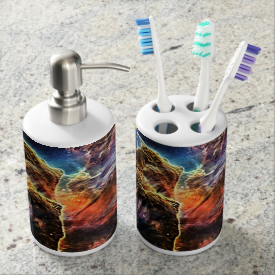







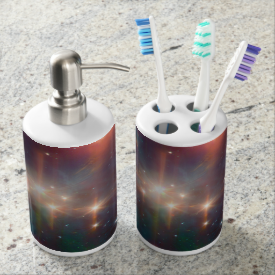





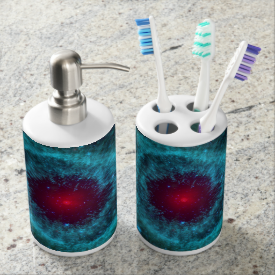


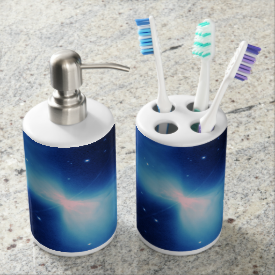







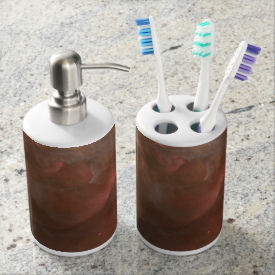

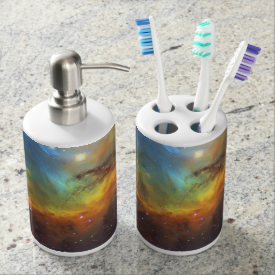


No comments:
Post a Comment